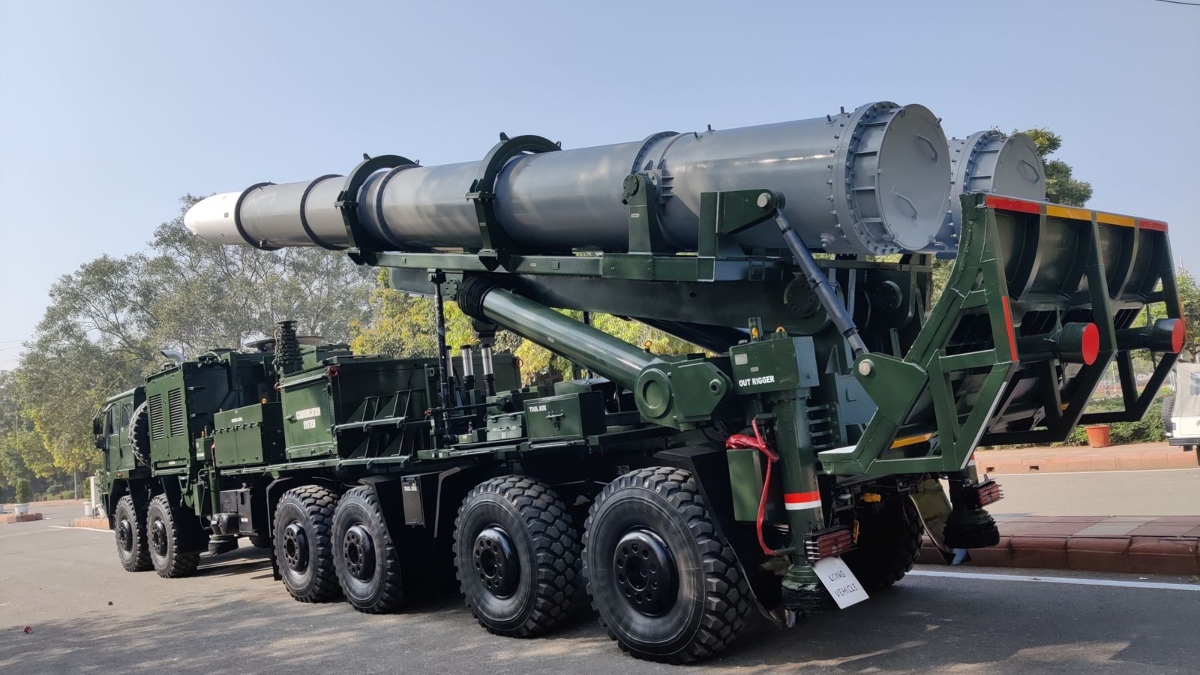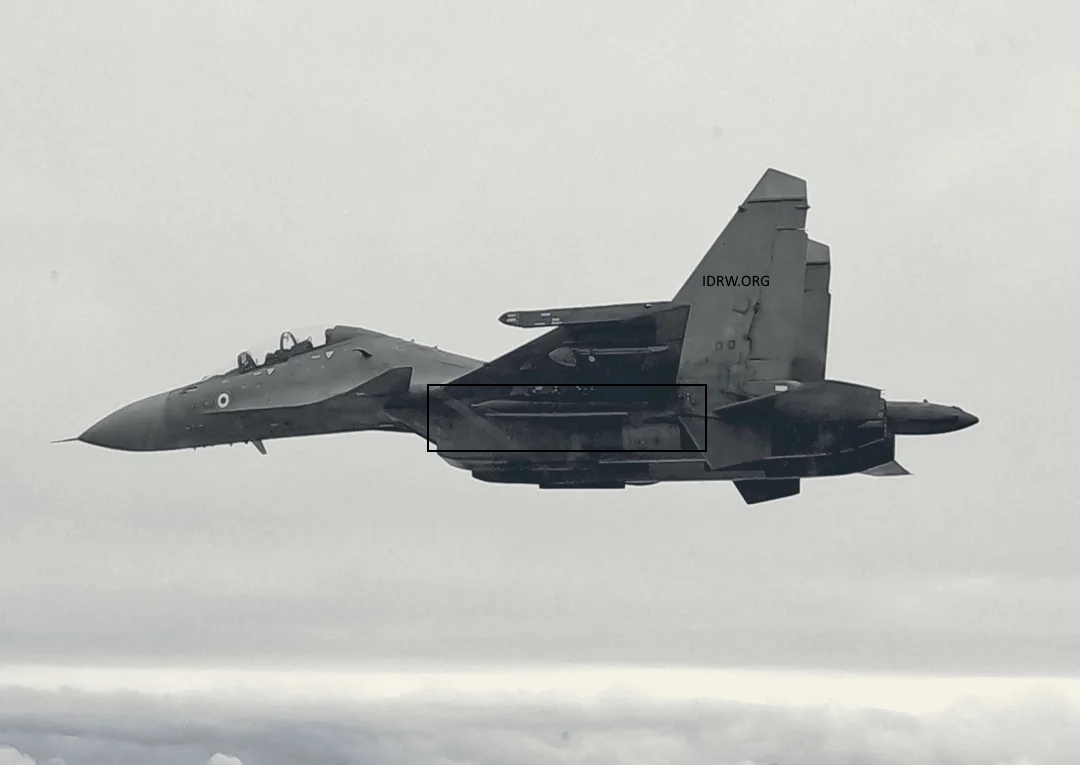SOURCE: RAUNAK KUNDE / NEWS BEAT / IDRW.ORG


After months of diplomatic and strategic discussions, India is reportedly on the verge of approving a request from Armenia for the supply of the Pralay surface-to-surface tactical ballistic missile (BM). Sources indicate that the deal, which has been under negotiation for some time, could be finalized in the coming weeks, marking a significant step in the growing defence cooperation between the two nations.
The Pralay missile, developed by India’s Defence Research and Development Organisation (DRDO), is a cutting-edge weapon system designed for precision strikes against high-value targets. With its quasi-ballistic trajectory and advanced guidance systems, the missile can evade enemy air defences, making it a potent addition to any military arsenal. However, due to India’s commitments as a member of the Missile Technology Control Regime (MTCR), the version of the Pralay missile to be supplied to Armenia will have a capped range of 290 kilometres.
Continue readingSOURCE: RAUNAK KUNDE / NEWS BEAT / IDRW.ORG


In a significant development for India’s naval ambitions, Mazagon Dock Shipbuilders Limited (MDL), the country’s premier submarine manufacturer, is independently designing a conventional diesel-electric submarine to rival a similar effort by the Defence Research and Development Organisation (DRDO).
An MDL official, speaking to idrw.org on March 18, 2025, revealed that the company’s in-house team is crafting a bespoke design to compete with DRDO’s proposal under Project-76. This dual-track approach could offer the Indian Navy two distinct indigenous options, enhancing flexibility and innovation in its quest for a next-generation underwater fleet.
Continue readingSOURCE: AFI


India’s defense landscape is undergoing a seismic shift, with the private sector emerging as a formidable force, challenging the long-standing dominance of Public Sector Undertakings (PSUs). While this rise signals a vibrant, innovative ecosystem, it has come at a cost for PSUs like Hindustan Aeronautics Limited (HAL), Bharat Electronics Limited (BEL), and others: a significant loss of key talent to private defense firms. Companies such as Tata Advanced Systems, Larsen & Toubro (L&T), and Adani Defence are luring skilled engineers, scientists, and executives with lucrative opportunities, raising concerns about the PSUs’ ability to retain expertise critical for India’s self-reliance in defense.
The Indian private defense sector has grown exponentially, driven by government initiatives like Make in India and the 2020 defense reforms, which opened doors for private players to bid on high-value contracts and collaborate with global giants. In 2024 alone, private firms secured orders worth over ?50,000 crore, including projects for artillery guns, drones, and missile systems. Companies like L&T have delivered advanced systems such as the K9 Vajra howitzer, while Tata’s partnership with Airbus for C-295 aircraft production showcases the sector’s technical prowess. This growth has created a demand for specialized talent, and private firms are capitalizing on their agility and resources to attract the best minds.
Continue readingSOURCE: AFI


India’s military aviation sector stands at a critical juncture, grappling with inefficiencies that threaten its ability to deliver cutting-edge capabilities to the armed forces. As global warfare evolves—evidenced by the transformative use of unmanned aerial vehicles (UAVs) in conflicts like Armenia-Azerbaijan and Russia-Ukraine—the Indian Air Force (IAF) remains the nation’s primary deterrent, reliant on Hindustan Aeronautics Limited (HAL) as its main equipper.
Yet, a fragmented ecosystem of overlapping government agencies, redundant projects, and organizational bloat hampers progress toward self-reliance. A time-bound review and rationalization of these entities, as argued by retired Air Vice Marshal Manmohan Bahadur in a recent opinion piece, is essential to ensure a focused path to indigenous excellence. This article explores the challenges and proposes a roadmap for reform, drawing on the need for efficiency, accountability, and strategic vision.
Continue readingSOURCE: AFI


For the fiscal year 2024-25, the Pakistan Air Force (PAF) has been allocated approximately 21.3% of the nation’s total defense budget, amounting to roughly $1.62 billion USD. This figure, while significant, raises eyebrows when juxtaposed against the PAF’s ambitious procurement plans: the acquisition of 40 J-35A stealth fighter jets from China, estimated at $70 million per unit, and participation in Turkey’s KAAN fifth-generation fighter jet program, with each unit carrying a hefty price tag of over $100 million, potentially climbing to $110 million.
The math doesn’t quite add up—purchasing 40 J-35As alone would cost $2.8 billion, far exceeding the PAF’s allocated budget, let alone adding the KAAN’s astronomical costs. So how does a cash-strapped nation like Pakistan, often teetering on the edge of economic collapse, fund such extravagant military upgrades? The answer lies in the Pakistani military’s shadowy financial ecosystem, where official budgets are just the tip of the iceberg, supplemented by a web of unconventional revenue streams ranging from legitimate commercial ventures to illicit black-market dealings.
Continue readingSOURCE: AFI


In a significant step toward deepening bilateral ties, Indian Defence Secretary Rajesh Kumar Singh is visiting Rome to advance strategic cooperation with Italy. The visit, which underscores the growing India-Italy Strategic Partnership, focuses on enhancing defence collaboration, maritime security, and industrial ties, with both nations exploring opportunities for joint weapons system development. This development aligns with India’s vision of self-reliance in defence manufacturing under the “Make in India” initiative and Italy’s ambition to strengthen its role as a key player in the Indo-Mediterranean geopolitical corridor.
On April 14, 2025, Rajesh Kumar Singh met with Italian Defence Minister Guido Crosetto in Rome, engaging in productive discussions to bolster defence cooperation. The talks emphasized the importance of the Indo-Mediterranean region as a vital link between Europe and the Indo-Pacific, where stability is critical for global security. According to sources, both sides expressed a keen interest in co-developing advanced weapons systems, leveraging their complementary industrial and technological capabilities.
Continue readingSOURCE: REUTERS


India is planning to ease its nuclear liability laws to cap accident-related penalties on equipment suppliers, three government sources said, in a move mainly to attract U.S. firms that have been holding back due to the risk of unlimited exposure.
The proposal by Prime Minister Narendra Modi’s government is the latest step to expand nuclear power production capacity by 12 times to 100 gigawatts by 2047 as well as provide a fillip to India in trade and tariff negotiations with the U.S.
Continue readingSOURCE: PTI


India on Friday rejected remarks by Bangladeshi officials on violence in West Bengal and asked Dhaka to focus on protecting the rights of its minorities instead of indulging in “virtue signalling”. “We reject the remarks made by the Bangladesh side with regard to the incidents in West Bengal,” External Affairs Ministry spokesperson Randhir Jaiswal said.
“This is a barely disguised and disingenuous attempt to draw a parallel with India’s concerns over the ongoing persecution of minorities in Bangladesh where the criminal perpetrators of such acts continue to roam free,” he said. Jaiswal was responding to media queries regarding comments made by Bangladesh officials on the developments in West Bengal.
Continue readingSOURCE: PTI

Indian astronaut Shubhanshu Shukla is set to travel to the International Space Station next month as part of an Axiom-4 mission, four decades after Rakesh Sharma’s iconic spaceflight onboard Russia’s Soyuz spacecraft, Union Minister Jitendra Singh said on Friday.
Singh made the remarks after reviewing the work of the Department of Space and the Indian Space Research Organisation (ISRO) here. “Group Captain Shukla’s journey is more than just a flight it’s a signal that India is stepping boldly into a new era of space exploration,” Singh said.
Continue readingSOURCE: PTI
)

A plan to hold a military exercise between the navies of Pakistan and Sri Lanka in the strategic waters of Trincomalee was shelved weeks back after New Delhi conveyed its concerns to Colombo over the proposed drills, multiple sources have said.
Trincomalee is situated on Sri Lanka’s northeastern coast and is considered a significant hub in the Indian Ocean region, especially for India’s maritime security interests. The sources said the navies of the two countries planned to carry out the exercise off Trincomalee in line with their regular engagements.
Continue readingSOURCE: PTI
)

Former RAW chief A S Dulat on Friday vehemently refuted claims suggesting that former Jammu and Kashmir chief minister Farooq Abdullah privately supported the abrogation of Article 370 of the Constitution, dismissing those as “absolute nonsense”.
Speaking at the launch of his book titled ‘The Chief Minister and the Spy’ here, he addressed the controversy that erupted following media reports that Abdullah had “privately” suggested that he would have helped in the abrogation of Article 370 in 2019 had he been taken into confidence.
Continue readingSOURCE: ANI


Union Defence Minister Rajnath Singh on Friday unveiled a statue of Maharana Pratap and paid tribute to him in Maharashtra’s Chhatrapati Sambhaji Nagar. Addressing the event, Singh highlighted the steps taken by the current government to make India self-reliant in the defence sector. He stated that defence exports from India have now reached a value of Rs 24,000 crore and expressed confidence that the exports will increase to Rs 50,000 crore by 2029-30.
“We are fully committed to making India self-reliant in defence production. When our government came to power in 2014, defence exports from India to other countries were around Rs 600 crore. Today, we have increased them to approximately Rs 24,000 crore. Our target is to raise this to Rs 50,000 crore by 2029-30,” Singh said.
Continue readingSOURCE: PTI


Former Navy captain Jagmohan has been appointed as chairman and managing director of Mazagon Dock Shipbuilders Limited, according an order from the ministry of personnel. He is currently the director of corporate planning, projects and business development at Goa Shipyard Limited.
The Appointments Committee of the Cabinet has approved Captain Jagmohan’s appointment at Mazagon Dock Shipbuilders for a period extending from the date of his assumption of charge till his superannuation in September 30, 2029, according to the order.
Continue readingSOURCE: PTI


The Indian Air Force’s prestigious Surya Kiran Aerobatic Team (SKAT) is set to light up the Ranchi skies with a breathtaking airshow on April 19 and 20 at the Namkum Army Ground, officials said on Friday.
The show will begin at 9:45 am on both days and will be split into two phases — the composite phase, where all nine aircraft fly in close formation, and the synchro phase, featuring smaller formations performing dynamic low-level manoeuvres, some as low as 100 feet, Squadron Leader Gaurav Patel said.
This airshow is not just about aerobatics, it is a celebration of the passion, discipline and spirit of the Indian Air Force, he said, adding for the first time ever in Ranchi, nine aircraft will perform such close, low-altitude manoeuvres.
Continue readingSOURCE: IDRW.ORG


In a significant leap toward self-reliance in defense technology, the Indian Air Force (IAF) is integrating the cutting-edge Khagantak 225 glide bomb, a 243 kg precision-guided munition, with its formidable Su-30MKI fighter aircraft. Developed by Nagpur-based startup JSR Dynamics Pvt. Ltd., in collaboration with Bharat Electronics Limited (BEL), this indigenous weapon marks a historic milestone as the first glide bomb produced by India’s private sector. With advanced guidance systems, a potent warhead, and an impressive range, the Khagantak 225 enhances the IAF’s ability to conduct long-range, high-precision strikes while keeping its aircraft beyond the reach of enemy air defenses.
The Khagantak 225 is a long-range, stand-off glide bomb designed to deliver pinpoint accuracy against high-value targets. Weighing 243 kg, it carries a 108 kg warhead optimized for blast-fragmentation effects, making it ideal for engaging fortified structures, command posts, and other critical infrastructure. The bomb’s standout feature is its hybrid guidance system, combining Inertial Navigation System (INS) and Global Positioning System (GPS) for robust mid-course navigation, even in GPS-denied environments. In the terminal phase, a Mid-Wave Infrared (MWIR) seeker takes over, providing exceptional targeting precision by locking onto the heat signatures of designated targets.
Continue reading